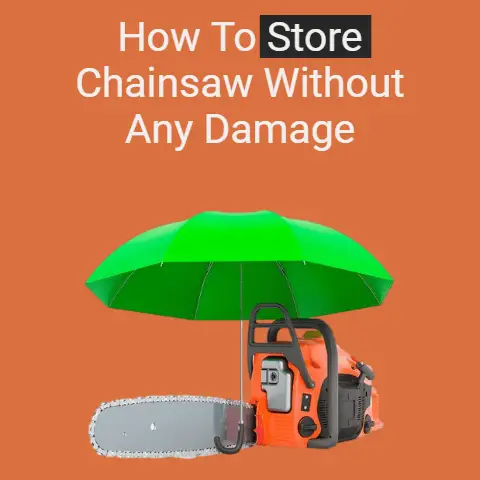How to Keep Chainsaw Sharp (3 Sharpening Hacks)
Wear-and-tear is inevitable with any tool, especially a chainsaw.
Keeping your chainsaw sharp is essential for efficiency, safety, and longevity.
Here, I’ll share some personal insights and hacks to keep your chainsaw performing at its best.
Grab a coffee, and let’s chat about how you can make this task easier and more effective.
Sharpening Hack #1: The Right Tools Matter
My Go-To Tools
Over the years, I’ve experimented with various tools.
Trust me, having a dedicated sharpening kit makes all the difference.
Here’s what’s in mine:
- Round File: This is specifically designed for chainsaw teeth.
I prefer the ones with a comfortable handle for better grip. - File Guide: It ensures that I maintain the correct angle when sharpening.
A consistent angle means a smoother cut. - Depth Gauge Tool: This little tool is often overlooked but crucial for maintaining the right cutting depth.
- Flat File: To adjust depth gauges when required.
Why These Tools?
The right tools simplify the process and enhance precision.
A round file matches the curve of the chainsaw teeth perfectly, while a file guide helps me keep a consistent angle, usually around 30 degrees.
The depth gauge tool ensures correct depth, which prevents the chain from biting too much wood and bogging down.
Pro Tip:
Invest in high-quality tools.
A dull file or a flimsy guide will only frustrate you and could potentially damage your chain.
My Experience with Different Kits
I remember my early days when I didn’t give much thought to my sharpening kit.
I used whatever was available, leading to uneven sharpening and frequent chain replacements.
Once I upgraded my tools, I noticed an immediate improvement in performance and longevity.
Sharpening Hack #2: Regular Touch-Ups
How Often Should You Sharpen?
I’ve found that sharpening after every few hours of cutting works best for me.
Waiting too long makes everything harder and wears out the chain faster.
Consistent maintenance saves time and money in the long run.
Step-by-Step Touch-Up Guide
- Secure Your Chainsaw:
Safety first!
Make sure it’s off and stable.
I use a bench vise for stability. - Use the File Guide:
Align it with the chain’s angle, ensuring consistency. - File Each Tooth:
Push the file across each tooth smoothly, applying even pressure.
Typically, 3-4 strokes per tooth are sufficient. - Check Depth Gauges:
Use the depth gauge tool to verify they are slightly lower than the teeth.
File if necessary.
Safety Reminder:
Always wear gloves and eye protection while sharpening to protect against accidental cuts and metal filings.
Importance of Consistency
In my early days, I often rushed through sharpening, leading to inconsistent angles and uneven wear.
This not only affected cutting efficiency but also increased wear on my chainsaw’s motor.
Sharpening Hack #3: Work Smart, Not Hard
Electric Sharpeners: A Game Changer
Discovering electric sharpeners was like finding a hidden gem.
They’re quick, maintain consistent angles, and significantly reduce manual effort.
Using an Electric Sharpener
- Set Up the Sharpener:
Follow the manufacturer’s instructions for mounting the chain securely. - Adjust Angle Settings:
Ensure it matches your chain’s specifications to maintain optimal performance. - Sharpen Each Tooth:
Lower the grinder onto each tooth gently.
This typically takes about 1-2 seconds per tooth.
Warning:
Avoid overheating the chain as it can weaken the metal.
Transitioning from Manual to Electric
Switching to an electric sharpener was a big decision for me.
Initially, I was skeptical about losing control over the process but quickly realized how much time and effort it saved without compromising on quality.
Equipment Requirements
- Round File
- File Guide
- Depth Gauge Tool
- Electric Sharpener (optional)
- Flat File for Depth Gauges
- Safety Gloves
- Eye Protection
Additional Tools for Perfectionists
For those who like to go the extra mile, consider adding a bench vise for stability, a brush for cleaning debris from the chain, and a magnifying glass to inspect teeth closely.
Prerequisite Knowledge
Understanding basic chainsaw anatomy is crucial.
Familiarize yourself with terms like “drive links,” “cutter teeth,” and “depth gauges.”
Anatomy of a Chainsaw Chain
Knowing your way around the chain helps in identifying issues quickly.
Cutter teeth do the cutting, while drive links help move the chain around the bar.
Depth gauges control how deep each tooth cuts into the wood.
Common Questions
Why does my chainsaw cut crooked?
This is often due to unevenly sharpened teeth or uneven wear on one side of the chain.
Double-check your angles and consistency during sharpening.
How can I tell if my chain is dull?
If you’re having to force the saw through wood or seeing fine sawdust instead of chips, it’s time for sharpening.
What if My Chain Keeps Dulling Quickly?
This could be due to hitting dirt or rocks while cutting or using a chain that’s too soft for your material.
Consider upgrading to a harder chain if needed.
Troubleshooting Tips
- Chain Pulls to One Side: Check for even sharpening.
Ensure all teeth are sharpened equally. - Chain Won’t Cut: Verify that depth gauges aren’t too high.
- Chain Gets Hot: This could be due to being too tight or dull; check both aspects.
- Vibrations When Cutting: Could indicate uneven sharpening or imbalanced teeth lengths.
Personal Experience with Troubleshooting
I once had an issue with my chain pulling hard to one side.
After inspecting it closely, I realized I had neglected consistent angles on one side.
A quick touch-up with my file guide resolved it completely.
Important Reminders
- Check Your Chain Regularly: Frequent inspections prevent small issues from becoming big problems.
- Handle With Care: Chainsaws are powerful tools; always prioritize safety.
- Practice Makes Perfect: Don’t get discouraged if it takes time to master these techniques.
Next Steps for Chainsaw Maintenance
Beyond sharpening, regular maintenance includes checking bar oil levels, cleaning air filters, and inspecting spark plugs.
Keeping your saw in top shape ensures long-term reliability.
FAQs
Can I sharpen without a file guide?
Yes, but using one ensures consistency and accuracy, reducing uneven wear on teeth.
How long should a chainsaw chain last?
With regular sharpening and proper care, a chain can last several months to years depending on usage frequency and conditions.
Is it better to sharpen or replace?
If a chain has excessive wear or damage, replacement is wise.
Otherwise, regular sharpening extends its life significantly.
What Are Signs My Chain Needs Replacing?
Look for cracked or broken drive links, missing teeth, or excessive stretch that can’t be adjusted anymore.
How Do I Prevent Rust on My Chain?
Keep your chain clean and well-oiled.
Store it in a dry place and consider using rust-preventive spray if storing for long periods.
By following these tips and hacks, you’ll keep your chainsaw sharp and ready to tackle any job efficiently and safely.
Remember, like any skill, mastering chainsaw maintenance takes practice and patience but results in rewarding outcomes both in performance and cost savings over time.






